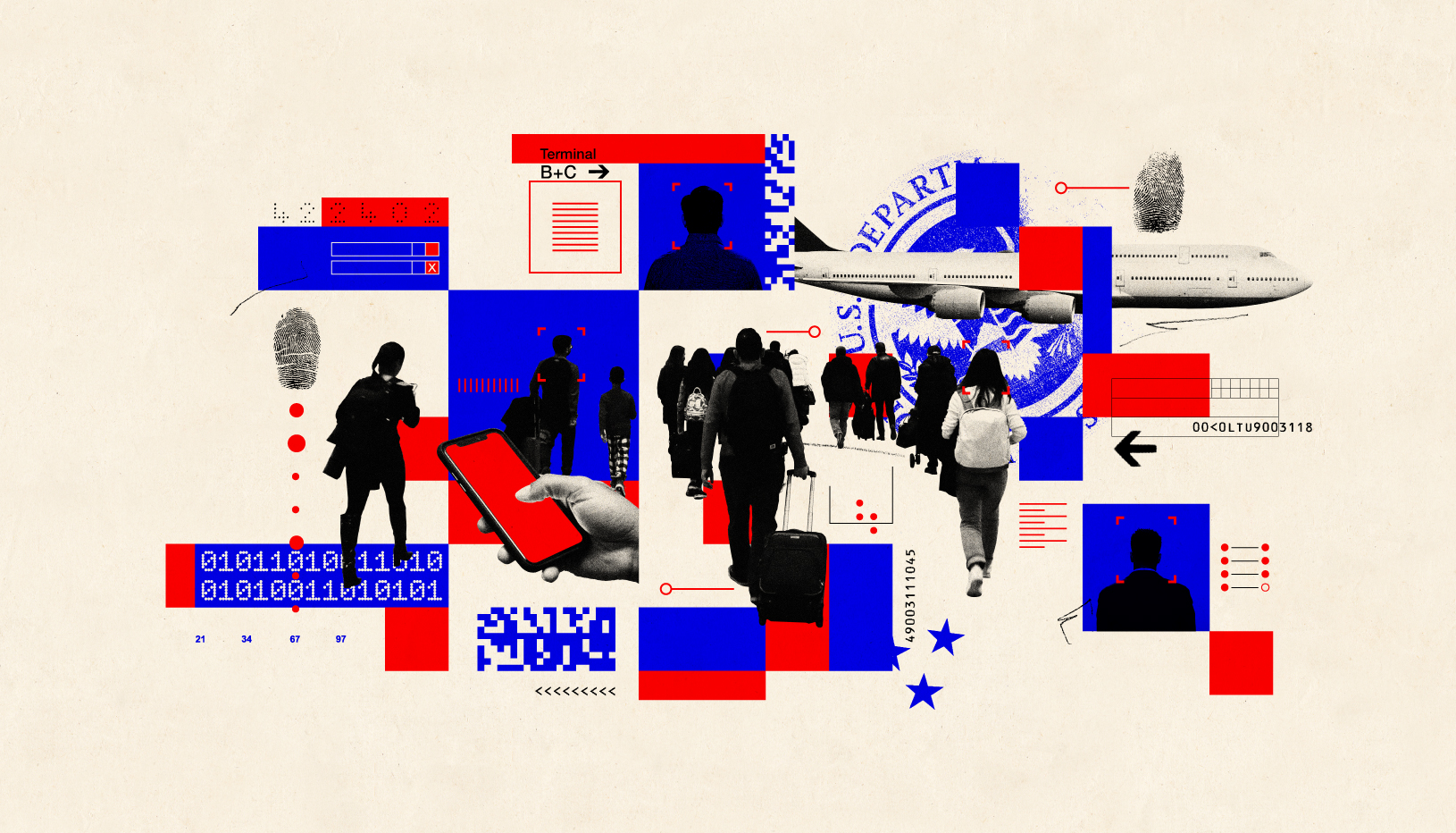The lack of systemic controls on the Department of Homeland Security (DHS) has been the subject of sustained public criticism throughout the agency’s history. Much of the scrutiny has focused on the abusive practices of Immigration and Customs Enforcement (ICE), whose Enforcement and Removal Operations (ERO) division is charged with apprehending, detaining, and deporting undocumented people in the United States. Meanwhile, ICE’s investigative and intelligence arm, Homeland Security Investigations (HSI), has largely evaded criticism by disassociating itself from these activities.footnote1_AArrHAJjrVzaREmC0tax8Xv5juHovk5fcqTv4iVsvP8_aEGL3oBIcHQP1 David Shaw (special agent in charge, HSI) et al. to Kirstjen Nielsen (secretary of homeland security, DHS), letter, June 21, 2018, https://www.documentcloud.org/documents/4562896-FILE-3286 (describing ICE as having “two distinct missions” and arguing that “the perception of HSI’s investigative independence is unnecessarily impacted by the political nature of civil immigration enforcement” by ERO).
Instead, HSI emphasizes its investigation and prosecution of “a wide array of transnational crime, including: terrorism, national security threats, narcotics smuggling, transnational gang activity, child exploitation, [and] human smuggling and trafficking.” Its purported focus is to “identify and build criminal cases against Transnational Criminal Organizations (TCOs), terrorist networks and facilitators, and other criminal elements that threaten the United States.”footnote2_45NSCz-EEc4BdNnEs6YqB6we-imRWBIEPyTRQHYVJ0Y_aGeKPYOkAENb2 ICE, “Homeland Security Investigations,” DHS, accessed May 16, 2023, https://www.ice.gov/about-ice/homeland-security-investigations#tab3.
In reality, however, HSI frequently involves itself in routine immigration enforcement focused on deporting undocumented workers — a responsibility assigned to ERO — for violations unrelated to complex criminal investigations.footnote3_Q-V2i6SZM4wdEh8NdwUNwkwNikOeUouL45wb-GMM_luJjyp0aGcP03 For example, while HSI’s press releases “appear to de-emphasize the immigration enforcement work engaged in by HSI in conjunction with . . . ERO,” its budget justification for fiscal year 2022 described 4,326 new worksite investigations and 3,903 Form I-9 employment eligibility inspections in 2020, resulting in 1,001 arrests. Carrie Cordero and Katie Galgano, From Mardi Gras to the Philippines: A Review of DHS Homeland Security Investigations, Center for a New American Security, July 28, 2021, https://www.cnas.org/publications/reports/from-mardi-gras-to-the-philippines-a-review-of-dhs-homeland-security-investigations. See also ICE, “Homeland Security Investigations.” HSI’s broad authorities, coupled with a dearth of transparency, invite abuse and overreach. Repeated incidents, particularly over the course of Donald Trump’s presidency, highlight that few safeguards exist to limit these authorities.
Although the Biden administration has rolled back HSI’s involvement in deportations, the ease with which HSI and its considerable investigative and surveillance power have been co-opted reveals both HSI’s susceptibility to political manipulation and the risk that it will pursue similar — or more troubling — objectives in the future. Given the lack of transparency into HSI’s characterization of its work, oversight should be a priority under any administration.
In addition, HSI has increasingly pursued extensive intelligence-gathering operations and sought invasive surveillance tools to covertly amass and analyze personal data. Such tools raise civil liberties concerns when used by any law enforcement agency; they present magnified risks in the hands of DHS, with its documented history of targeting minority communities, journalists, and political activists.
It is past time for policymakers to limit HSI’s authority and establish stronger safeguards and accountability to prevent further abuse.
Section I of this report details HSI’s history and mandate, explaining how the office’s role has expanded over time. It illustrates HSI’s broad discretion to decide what to investigate and compares HSI with other federal law enforcement and intelligence agencies to show the extent of its power and lack of safeguards.
Section II documents HSI’s involvement in DHS’s deportation activities, including its lead role in initiatives unrelated to its mission of targeting criminal networks and complex crimes — such as workplace raids, DNA testing of families at the border, investigations targeting naturalized citizens and sponsors of unaccompanied children, and warrantless searches of cell phones and laptops. The section also analyzes how HSI exploits its transnational crime mandate to conduct dragnet surveillance of financial transactions, as well as its involvement in the detention and deportation of young immigrants by labeling them as gang members or associates, sometimes with minimal or no proof.
Section III analyzes HSI’s intelligence and surveillance activities. Surveillance technologies include devices used to collect data from cell phones; facial recognition tools used to identify detained persons and generate lists of suspects for investigations; and the data analytics platform that HSI is currently building, which uses artificial intelligence (AI) to collect and analyze personal data.
Section IV offers a series of recommendations for reform. First, Congress and the secretary of homeland security should establish greater separation between ERO and HSI to acknowledge what HSI’s own senior staff has long said: the two components have distinct missions and the department’s structure should reflect that.footnote4_UlLK0LVQjdkB0F7f2JhyfcMIC2paawVEGtcmxGbltw8_p2qlgVfw4Q9M4 Shaw et al. to Nielsen (“The two ICE sub-agencies have become so specialized and independent that ICE’s mission . . . can only be described as a combination of the two distinct missions.”); and Carrie F. Cordero, Reforming the Department of Homeland Security Through Enhanced Oversight and Accountability, Center for a New American Security, May 12, 2020, 24, https://www.cnas.org/publications/reports/reforming-the-department-of-homeland-security-through-enhanced-oversight-accountability (noting that HSI special agents in charge have identified the “problem” of “HSI continually competing for resources with ERO and its separate mission”). Such a realignment would reduce structural pressures on HSI to involve itself in immigration matters with no nexus to serious crimes and limit ERO’s access to HSI’s array of surveillance tools and troves of personal data.
In addition, Congress should adopt a legislative charter that delineates HSI’s investigative authority. In the meantime, the DHS secretary should issue interim guidelines that establish boundaries for HSI’s investigative authorities and tools. Finally, the secretary should institute reporting requirements to facilitate disclosures, and Congress should use its oversight power to increase transparency around HSI’s surveillance use.
A Realignment for Homeland … by The Brennan Center for Justice
End Notes
-
footnote1_AArrHAJjrVzaREmC0tax8Xv5juHovk5fcqTv4iVsvP8_aEGL3oBIcHQP
1
David Shaw (special agent in charge, HSI) et al. to Kirstjen Nielsen (secretary of homeland security, DHS), letter, June 21, 2018, https://www.documentcloud.org/documents/4562896-FILE-3286 (describing ICE as having “two distinct missions” and arguing that “the perception of HSI’s investigative independence is unnecessarily impacted by the political nature of civil immigration enforcement” by ERO). -
footnote2_45NSCz-EEc4BdNnEs6YqB6we-imRWBIEPyTRQHYVJ0Y_aGeKPYOkAENb
2
ICE, “Homeland Security Investigations,” DHS, accessed May 16, 2023, https://www.ice.gov/about-ice/homeland-security-investigations#tab3. -
footnote3_Q-V2i6SZM4wdEh8NdwUNwkwNikOeUouL45wb-GMM_luJjyp0aGcP0
3
For example, while HSI’s press releases “appear to de-emphasize the immigration enforcement work engaged in by HSI in conjunction with . . . ERO,” its budget justification for fiscal year 2022 described 4,326 new worksite investigations and 3,903 Form I-9 employment eligibility inspections in 2020, resulting in 1,001 arrests. Carrie Cordero and Katie Galgano, From Mardi Gras to the Philippines: A Review of DHS Homeland Security Investigations, Center for a New American Security, July 28, 2021, https://www.cnas.org/publications/reports/from-mardi-gras-to-the-philippines-a-review-of-dhs-homeland-security-investigations. See also ICE, “Homeland Security Investigations.” -
footnote4_UlLK0LVQjdkB0F7f2JhyfcMIC2paawVEGtcmxGbltw8_p2qlgVfw4Q9M
4
Shaw et al. to Nielsen (“The two ICE sub-agencies have become so specialized and independent that ICE’s mission . . . can only be described as a combination of the two distinct missions.”); and Carrie F. Cordero, Reforming the Department of Homeland Security Through Enhanced Oversight and Accountability, Center for a New American Security, May 12, 2020, 24, https://www.cnas.org/publications/reports/reforming-the-department-of-homeland-security-through-enhanced-oversight-accountability (noting that HSI special agents in charge have identified the “problem” of “HSI continually competing for resources with ERO and its separate mission”).










